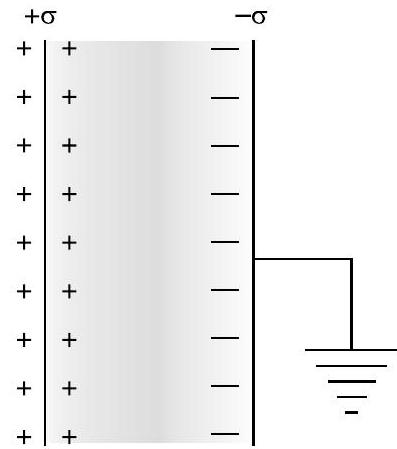Question: Q. 5. (i) If two similar large plates, each of area
(a) field at points between the two plates and on outer side of the plates.
Specify the direction of the field in each case.
(b) the potential difference between the plates.
(c) the capacitance of the capacitor so formed.
(ii) Two metallic spheres of radii
Show Answer
Solution:
Ans.
(i)

(a) The electric field at point between the plates
and directed from positive plate to negative plate.
(b) Potential difference
(c) Charge on capacitor
(ii) When two charged conducting metallic spheres are connected with a conducting wire, then charge flows between the two, till their potentials become equal or redistribution of charges takes place i.e., charge is divided on both the spheres.
AI Q. 6. A capacitor of capacitance
(i) Find the total energy stored in the two capacitors before they are connected.
(ii) Find the total energy stored in the parallel combination of the two capacitors.
(iii) Explain the reason for the difference of energy in parallel combination in comparison to the total energy before they are connected.
R [Comptt. Delhi/O.D. I, II, III 2018]
Ans. (i) Finding the total energy before the capacitors are connected
1
(ii) Finding the total energy in the parallel combination
(iii) Reason for difference
(i) We have
Energy stored in a capacitor
$$ \begin{array}{ll} \mathrm{E}{1} & =\frac{1}{2} C{1} V_{1}^{2} \ \text { And } \quad \mathrm{E}{2} & =\frac{1}{2} C{2} V_{2}^{2} \end{array} $$
(b) Let
Equivalent capacitance
$$ \begin{array}{rlr} \left(\mathrm{C}{1}+\mathrm{C}{2}\right) \mathrm{V} & =\mathrm{C}{1} \mathrm{~V}{1}+\mathrm{C}{2} \mathrm{~V}{2} & 1 / 2 \ \Rightarrow \quad \mathrm{V} & =\left[\frac{\mathrm{C}{1} \mathrm{~V}{1}+\mathrm{C}{2} \mathrm{~V}{2}}{\left(\mathrm{C}{1}+\mathrm{C}{2}\right)}\right] & \mathbf{1} \end{array} $$
(c) The total energy of the parallel combination is different (less) from the total energy before the capacitors are connected. This is because some energy gets used up due to the movement of charges.
[CBSE Marking Scheme, 2018]

UNIT - II






